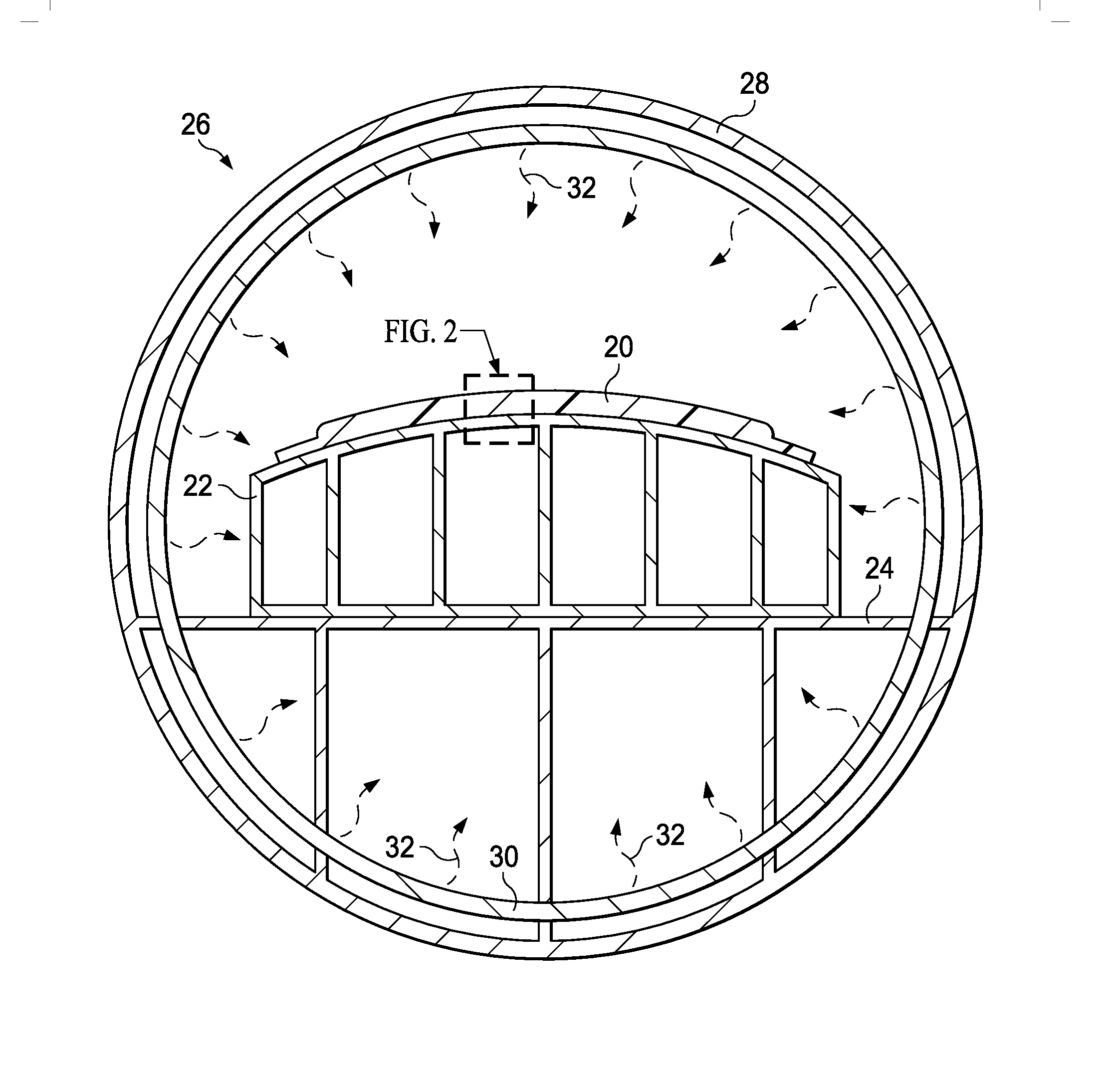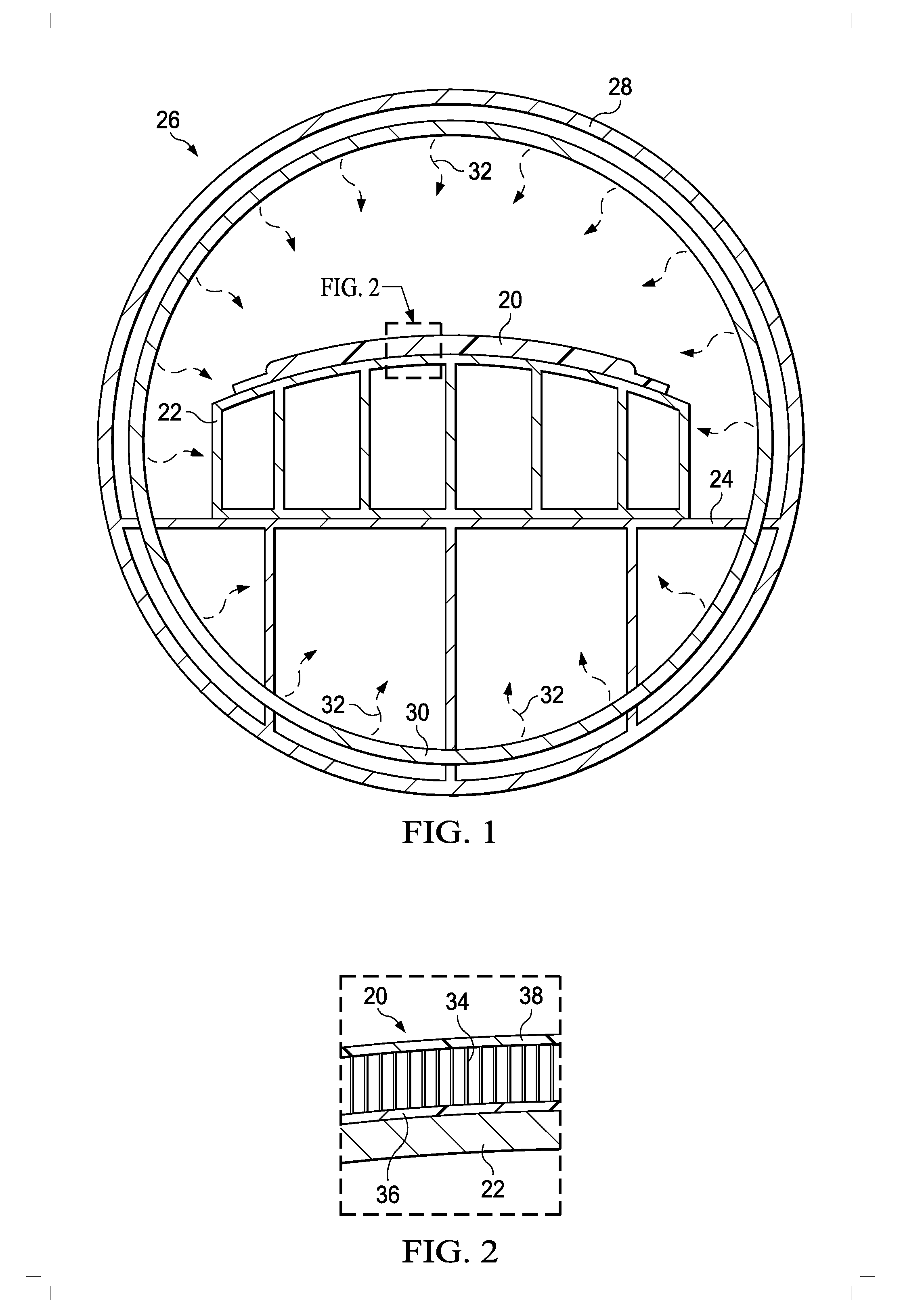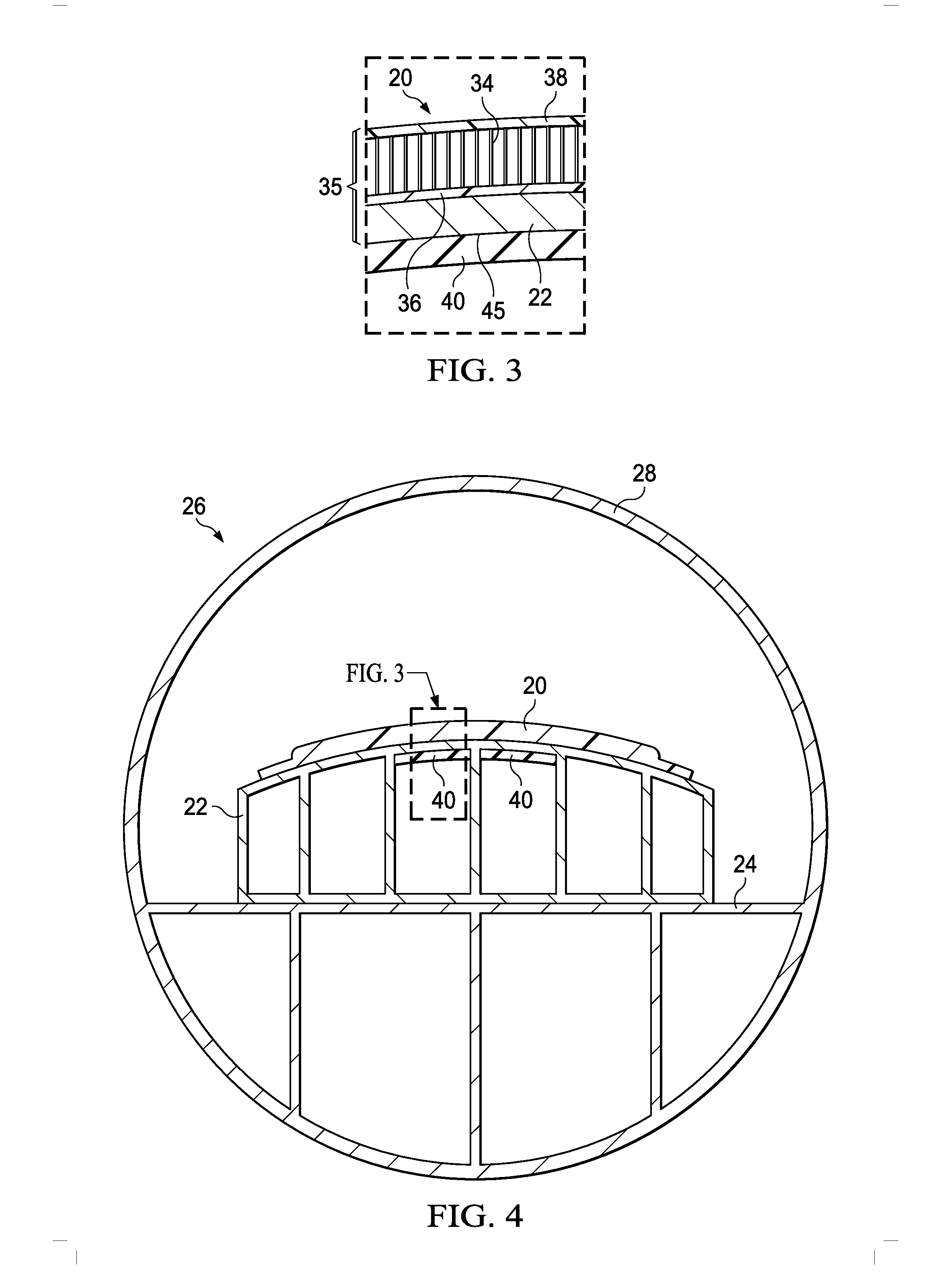Induction Heating Augmentation for Thermal Curing
a technology of thermal curing and induction heating, which is applied in the field of thermoset composite parts fabrication, can solve the problems of shortening the curing thermal cycle, needing additional autoclaves or ovens, and reducing production throughput, so as to reduce the curing cycle time, increase the mass or thermal insulation characteristics, and facilitate installation
- Summary
- Abstract
- Description
- Claims
- Application Information
AI Technical Summary
Benefits of technology
Problems solved by technology
Method used
Image
Examples
Embodiment Construction
[0026]Referring first to FIGS. 1 and 2, an uncured, thermoset resin composite part 20 may be placed on a cure tool 22 for curing in an autoclave 26. The assembly of the composite part 20 and cure tool 20 are supported on a cure rack 24 inside a pressure vessel 28 forming part of the autoclave 26. As shown in FIG. 2, the composite part 20 may comprise, for example and without limitation, a sandwich panel comprising a honeycomb core 34 sandwiched between inner and outer facesheets 36, 38, respectively. Each of inner and outer facesheets 36, 38 may comprise multiple laminated plies (not shown) of a fiber reinforced thermosetting resin, such as carbon fiber epoxy. A wide range of other constructions and geometries are possible for the thermoset composite part 20.
[0027]The composite part 20 is cured by subjecting it to a combination of heat and pressure within the autoclave 26, according to a predetermined cure schedule specifying applied pressures, temperatures and durations for which t...
PUM
| Property | Measurement | Unit |
|---|---|---|
| frequencies | aaaaa | aaaaa |
| frequencies | aaaaa | aaaaa |
| area | aaaaa | aaaaa |
Abstract
Description
Claims
Application Information
 Login to View More
Login to View More - R&D
- Intellectual Property
- Life Sciences
- Materials
- Tech Scout
- Unparalleled Data Quality
- Higher Quality Content
- 60% Fewer Hallucinations
Browse by: Latest US Patents, China's latest patents, Technical Efficacy Thesaurus, Application Domain, Technology Topic, Popular Technical Reports.
© 2025 PatSnap. All rights reserved.Legal|Privacy policy|Modern Slavery Act Transparency Statement|Sitemap|About US| Contact US: help@patsnap.com



